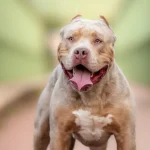Did you know that 1 in 3 pets in the UK are overweight?! Carrying extra weight can lead to decreased life expectancy and serious conditions such as diabetes, heart disease, arthritis and high blood pressure.
It’s so easy to get your pet in shape. With less weight, they’ll feel happier, be more energetic and much healthier.
How to tell if your pet is overweight?
Pets come in all sorts of shapes and sizes, so sometimes it is difficult to judge whether your pet is overweight, underweight or just right. The main signs that your pet is overweight are:
- A saggy tummy
- No visible waistline
- Fat rolls over the back, neck and tail base
- It’s difficult to feel their ribs
Top tips for pet weight loss
To reduce your pet’s weight, you should be looking at feeding them less, or putting them on a “light” food.
If your pet gets fed treats and titbits and it’s hard to monitor how much food your pet is actually getting, we recommend that you measure out your pet’s food for the entire day into one container, so no matter who is feeding them, your pet will only be fed the amount they are allowed – no extra treats allowed!
Instead of giving your pet high calorie treats, small pieces of vegetables such as raw carrot, broccoli or green beans are an excellent alternative.
Avoid giving table scraps to your pet; many human foods are high in salt, sugar and fat, or may even be toxic.
Vary the types of exercise your pet gets, from longer walks to runs in the park or simply just playing with toys at home.
If you think your pet could benefit from losing a little weight, or if you are unsure if they are carrying too much weight, then simply pop into The Vet for a free weight clinic and we can check your pet’s weight and tailor a diet and exercise programme especially for them.





